At least with the cutout palm area spastic fingers could get it on. But which glove is your doctor and therapists already using for your recovery? NONE? I guess you don't have a functioning stroke doctor or hospital!
Hopefully your competent? doctor has already tested out these others and found the best one for recovery
Many gloves out there. Which is the best? Your doctor better know the answer.
FES-Robotic Glove (1)
Gyroscopic glove (1)
HERO Grip Glove (1)
music glove (1)
RAPAEL Smart Glove (5)
SaeboGlove (1)
VTS Glove (1)
EsoGlove (1)
glove (101 posts to October 2011)
I hated the Saebo-flex glove I got, the bead chains were impossible to adjust one-handed and the thumb couldn't get positioned properly. Saebo told me their glove was meant to be adjusted by a therapist, I totally disagree with that stance.
Pneumatic robotic glove aids training for stroke and hand disability rehabilitation
XFT Medical and IDC present the Hand Rehabilitation Glove — a training device designed to aid patients recovering from strokes or hand disabilities. The neoprene glove combines EMG feedback and flexible robotics for patients to support in training and repairing dexterity. Using flexible air-activated muscles to aid movement, the robotic glove targets limb motor function and prevents muscle disuse atrophy, enabling patients to carry out passive rehabilitation training through pre-set training programs.
Featuring six distinct training modes, including power-assisted movement and resistance training, the glove offers a versatile approach to muscle strengthening. Users can complete specific training programs tailored for full hand movement, fingertip touch training, and single finger exercises, promoting both gross and fine motor skill improvement. With size options available in small, medium, and large, the glove ensures a comfortable fit for all, while its adjustable air pressure mechanism enables personalized strength settings, catering to individual rehabilitation needs.
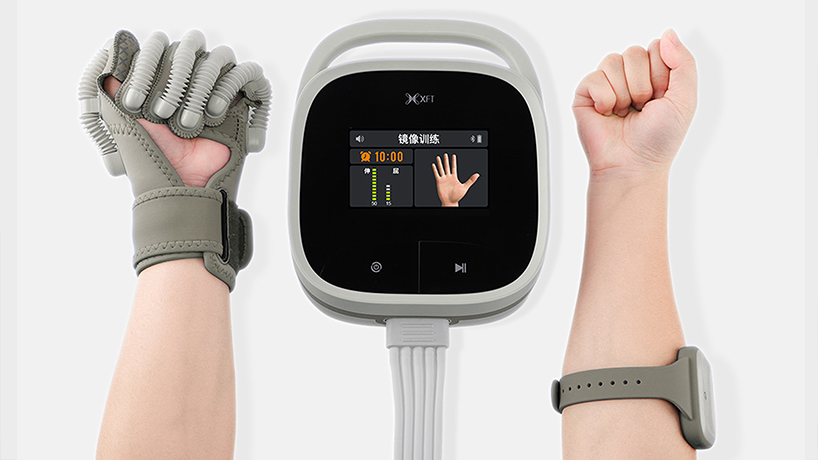
all images courtesy of IDC
the training device accelerates repairing hand dexterity
XFT Medical has had a long-standing partnership with IDC to develop a range of medical and rehabilitation devices. Their Hand Rehabilitation Glove, alongside an EMG armband and control unit aligned with XFT’s existing home medical line up, work together united by a cohesive brand identity. Integrating innovative mirror technology, the armband enables synchronous movement between unaffected between affected and unaffected hands, aiding autonomous brain recovery and accelerating the rehabilitation process.
For the robotic glove, IDC followed an empathetic design process to understand and address the specific requirements of users, many of whom are affected by reduce dexterity and lack caregiver assistance to help use the product. The team recognized that the device must be simple to use, easy to put on using only one hand, leading to the design’s cut-out palm area, fingertip hoods, and supportive wrist strap. Testing was conducted to optimize the balance between functionality, treatment effectiveness, and user experience, and neoprene was eventually selected for its washability, strength, and comfort. From user testing, IDC found that often the patients had weak wrists making it hard to complete the training, prompting the integration of a wrist strap to enhance usability and treatment effectiveness.
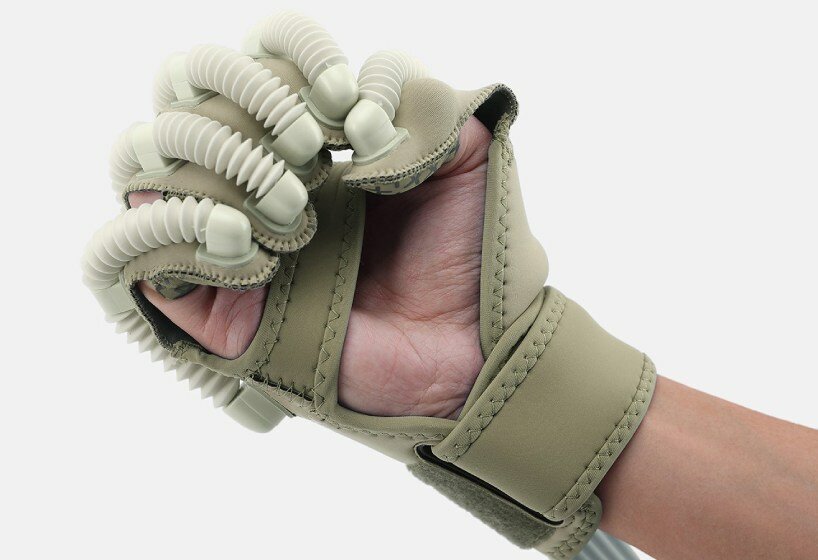
XFT Medical and IDC present the Hand Rehabilitation Glove
the glove’s neoprene form integrates advanced engineering
Competitor research revealed key issues with existing offerings, with bulky solutions which didn’t grant enough flexibility and mobility. Using IDC’s in-house prototyping capabilities, different solutions for the glove were tested and optimized, finding that rounded bellows expand more effectively. While initial concepts aimed for a custom integrated bellow to give the product a sleek, unified look, manufacturability constraints and cost analysis led to the adoption of proven bellows with refined junctions for a cleaner design. There was also a focus on clean and unobtrusive airway management to power the bellows from the control unit.
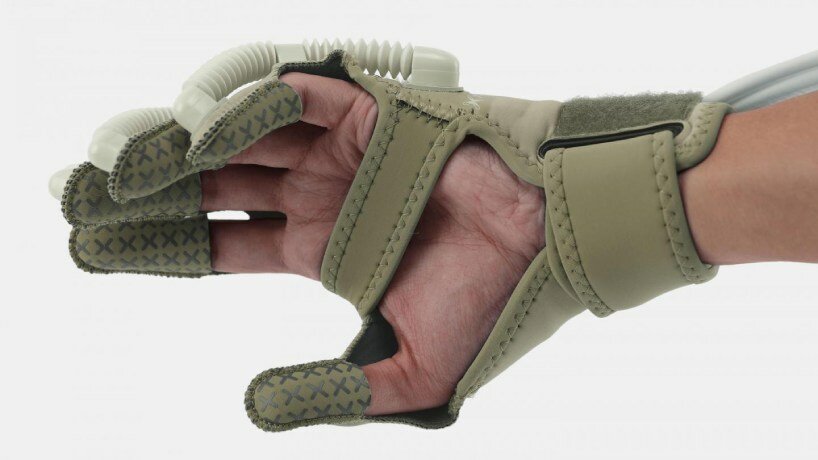
the design features a cut-out palm area, fingertip hoods, and supportive wrist strap
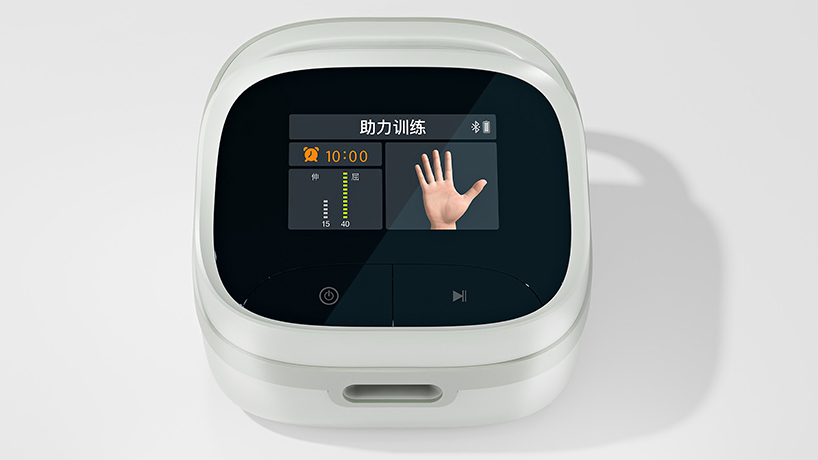
the robotic glove functions alongside an EMG armband and control unit
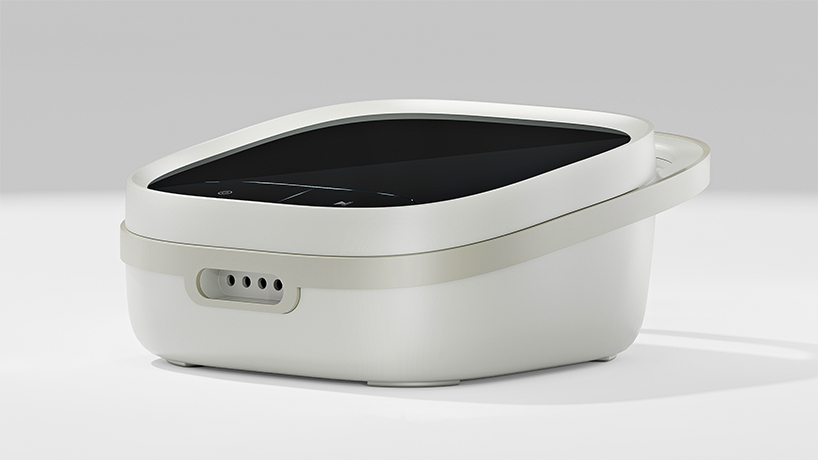
the training devices are designed to aid patients recovering from strokes or hand disabilities
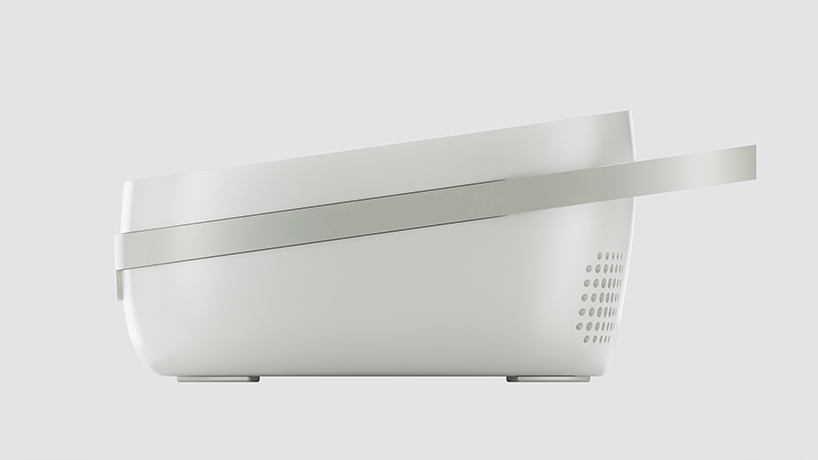
training programs promote both gross and fine motor skill improvement
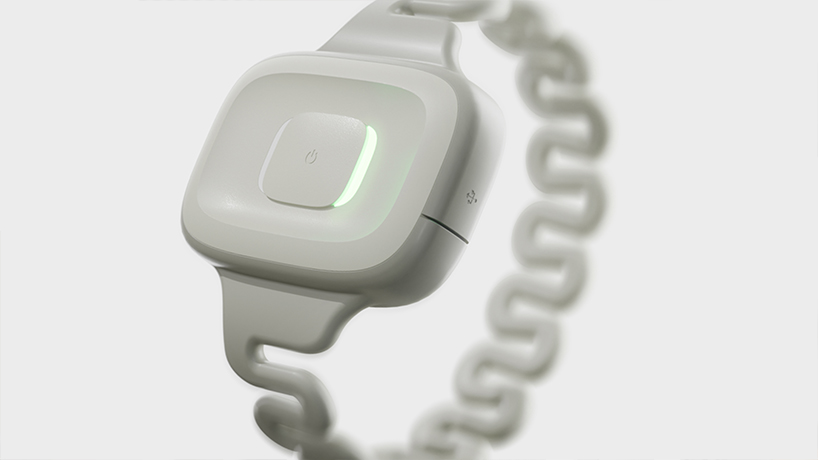
the armband enables synchronous movement between unaffected between affected and unaffected hands
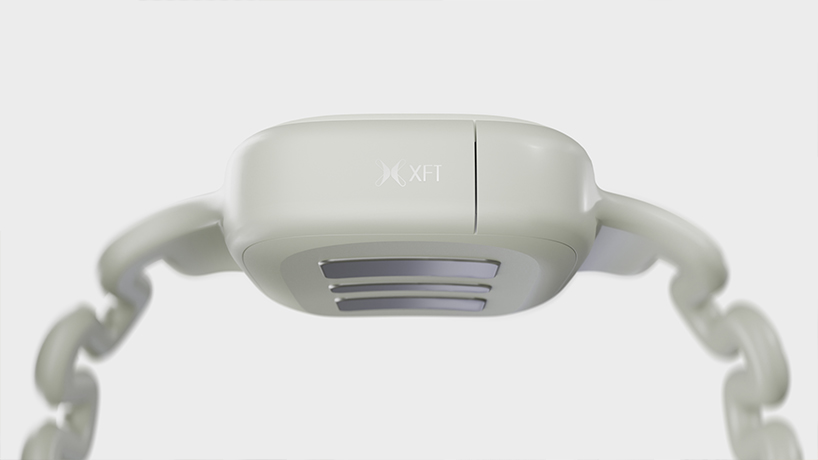
testing optimized the balance between functionality, treatment effectiveness, and user experience
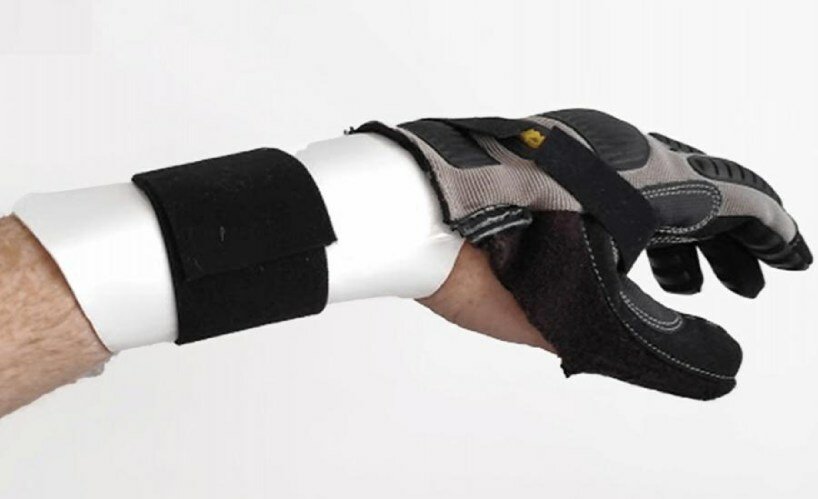
the glove targets limb motor function and prevents muscle disuse atrophy
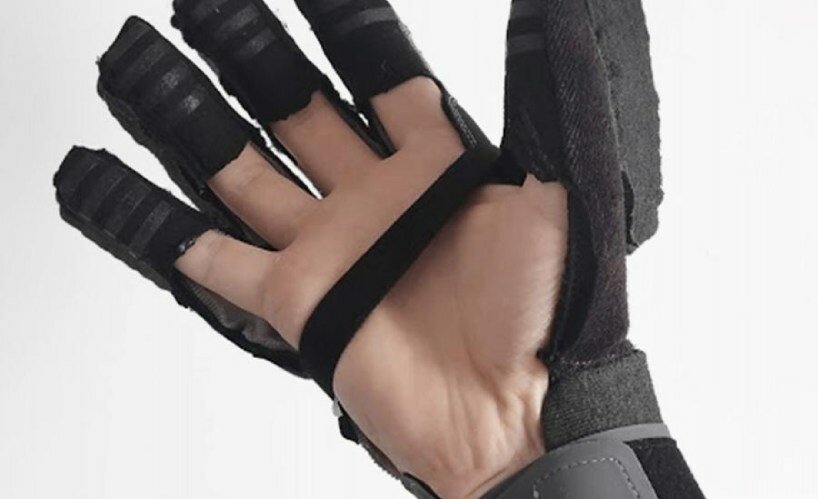
there was a focus on clean and unobtrusive airway management to power the bellows from the control unit
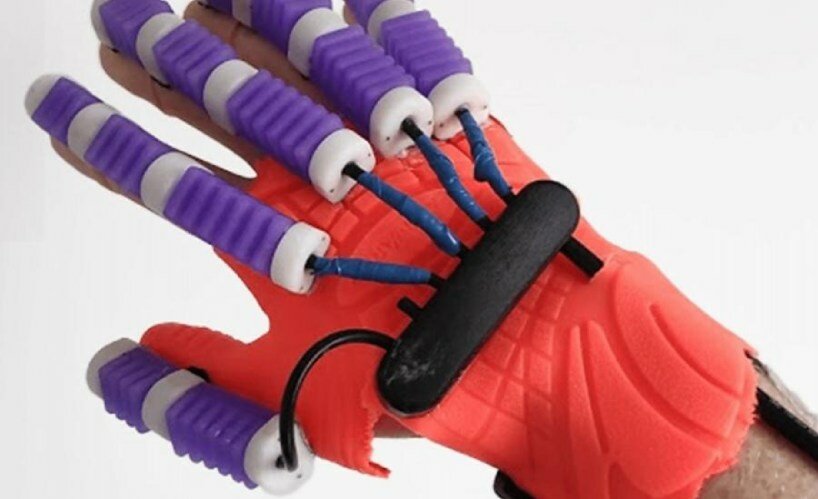
the neoprene glove combines EMG electromyographic feedback and flexible robotics
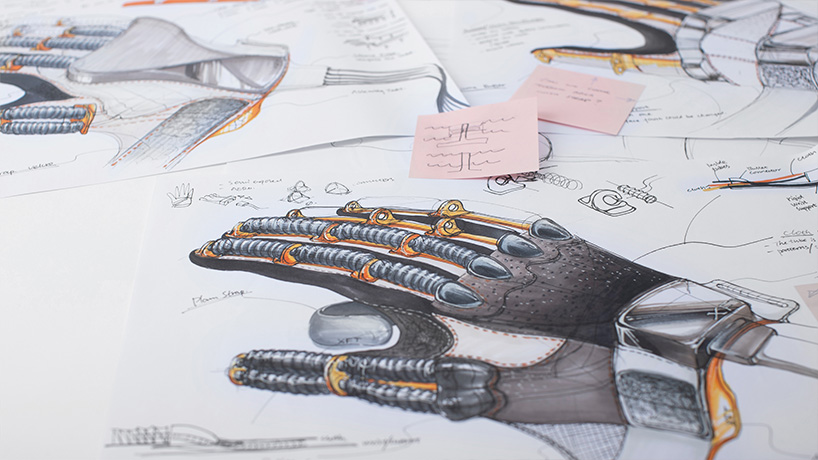
design process
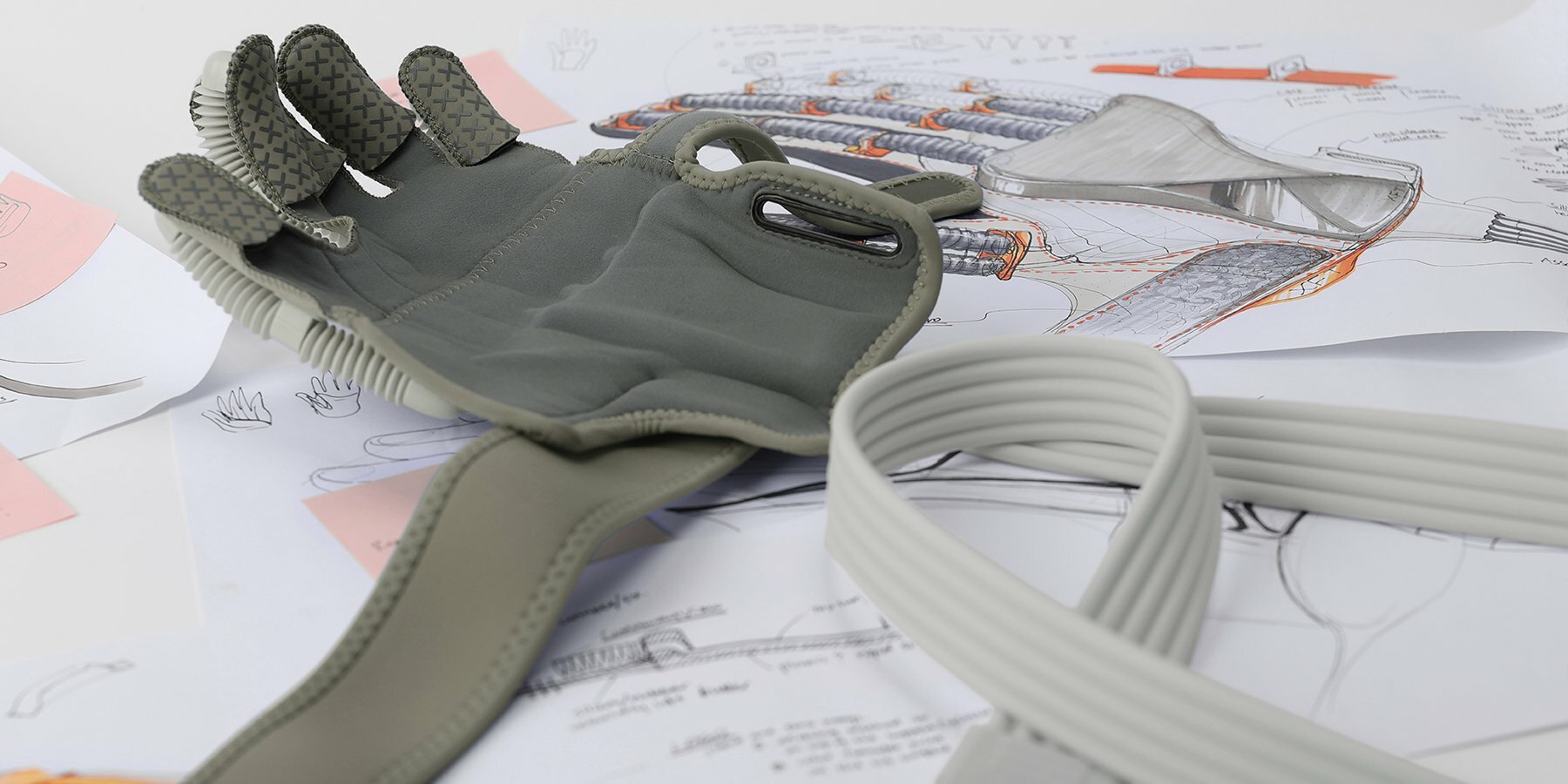
No comments:
Post a Comment